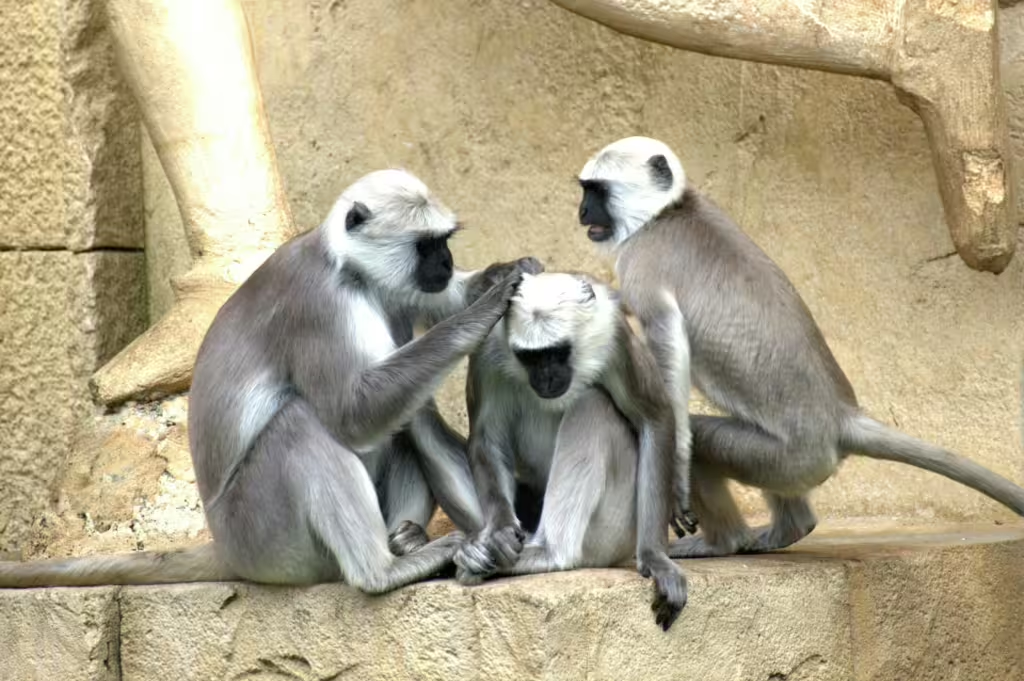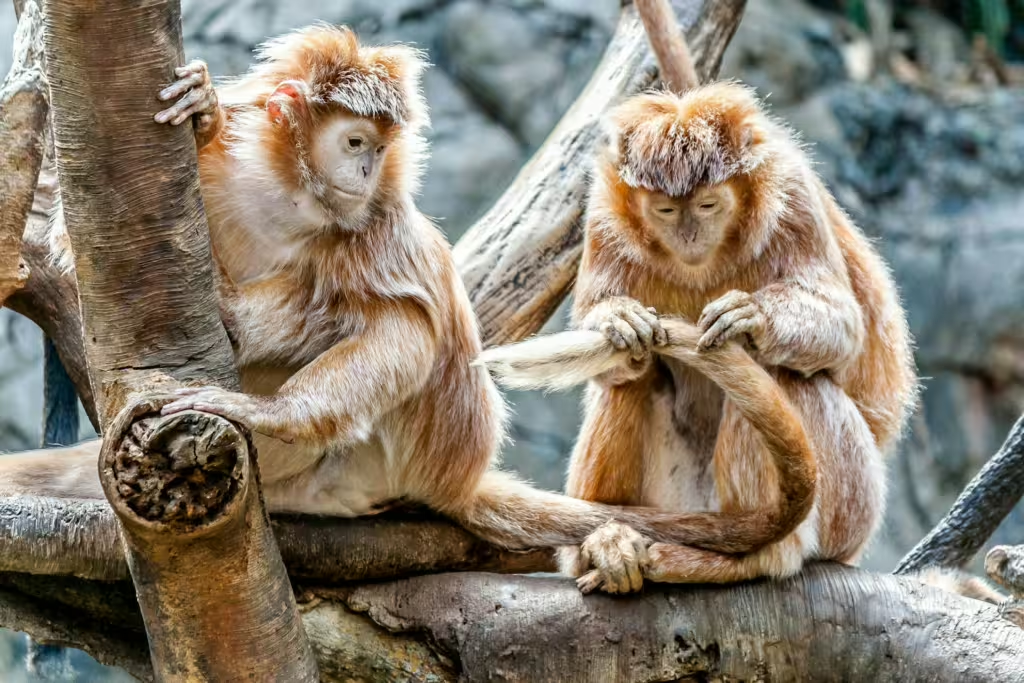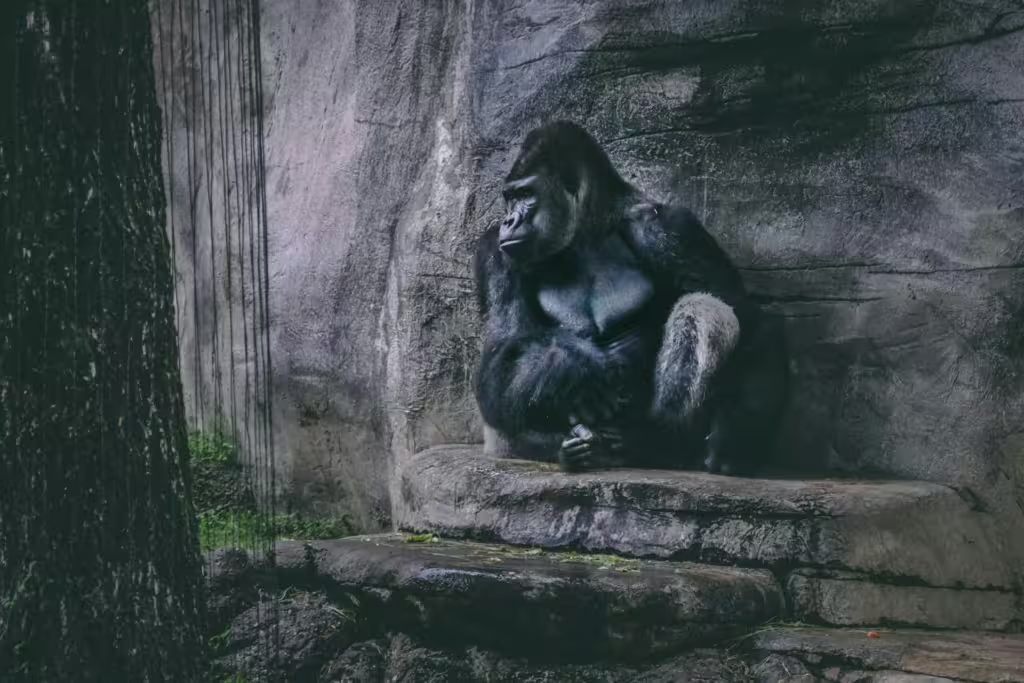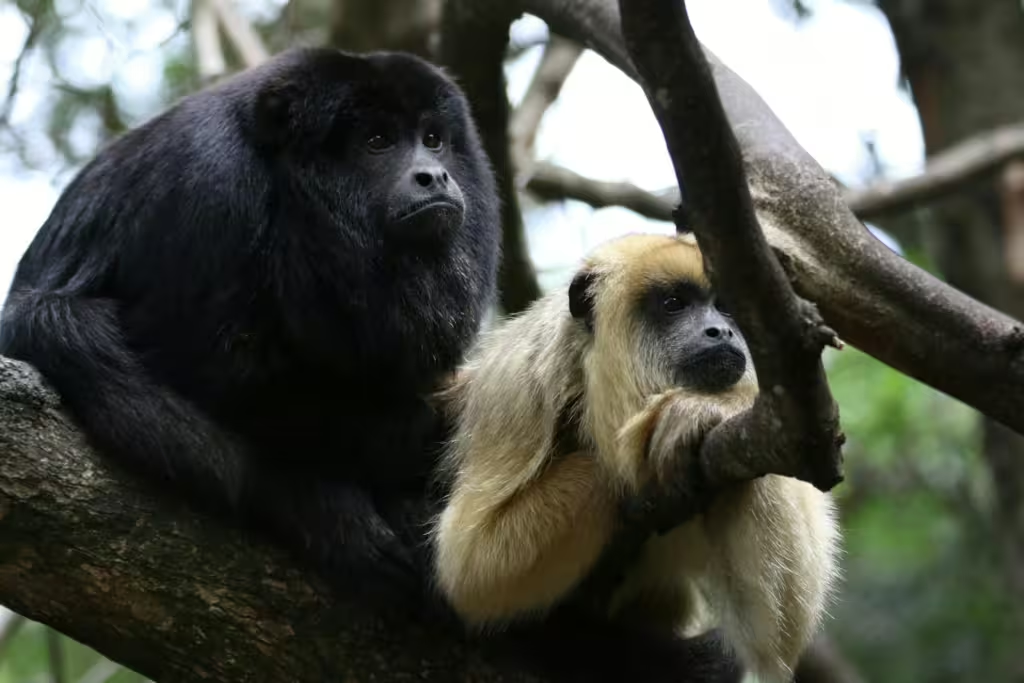As humans, it’s safe to say that we have pretty much gotten the hang of this communication thing. Take this very article, for instance. Here we are, using a language that many of us know by heart, to communicate important facts to one another over a multitude of devices and platforms designed to facilitate communication across the entire globe!
Where did we learn all these amazing methods of communication, you may ask? Some might say we picked it up from our primate cousins and ancestors. Whether you follow the theory of evolution or not, you must agree that communication is the lifeline of social interaction in the animal kingdom; a kingdom that we are indeed a part of. And while many animals from birds to wolves and elephants have effective methods of communication, primates, in particular, showcase some of the most fascinating examples of non-human communication.
Whether through haunting calls like siamang gibbons or via intricate gestures of great apes, primates utilize a rich tapestry of sounds, gestures, and expressions to communicate to one another about the world around them. In this article, we will explore the various communication methods of siamangs, gorillas, chimpanzees, howler monkeys, and many more. When all that is said and done, we will delve into the extraordinary story of Koko the gorilla, who was herself an enduring symbol of cross-species understanding.
Means of Communication
Primates, whether monkeys or great apes, represent our closest relatives in the animal kingdom. These animals possess a diverse and complex range of communication methods, from familiar facial expressions, to complicated gestures, chemical signals, and most commonly, unique vocalizations; the latter of which are often specific to species or even familial groups. However they choose to speak to one another, each of these remarkable forms of communication plays a critical role in maintaining the social bonds within primate societies. They can warn of danger, show love, indicate food sources, resolve conflicts, coordinate group activities, and much, much more.
Vocal Communication
One of the primary ways primates (ourselves included) communicate is through vocalizations. The sounds that apes and monkeys make can vary widely in complexity, from simple calls to elaborate vocal sequences. This works very much the way our language does, as different calls can mean vastly different things. Vervet monkeys, for example, use specific alarm calls to warn group members about different predators. The alarm for a leopard approaching sounds very different than one for an eagle, which sounds different than one the monkeys might use to warn about a nearby snake. Moreover, each of these diverse warning calls triggers an appropriate response, such as climbing a tree, looking to the sky, or scanning the ground for the alleged predator.
Howler monkeys employ a similar method for warning but also utilizing varying types of loud, resonating calls to mark their territory and signal their presence to rival groups of howlers. Many species of apes, including chimpanzees, bonobos, and gibbons, also utilize vocalizations to communicate with one another. Chimpanzees emit pant-hoots to indicate excitement. They tend to make these sounds both when they find food or when they reunite with group members. Gibbons are a bit more complex, especially when their mates are concerned. They will often serenade together, producing unique duets between mated pairs, which strengthen pair bonds. These calls are also used to defend their territories from rival couples and other groups.
Gestural Communication
We, as humans, utilize gestures all the time. We give someone the thumbs up for approval or nod our head to show agreement. We can offer a high five or dismissive hand gesture to indicate disinterest or disapproval. The same is true for lower primates. Gestures are yet another significant aspect of primate communication that include physical actions such as pointing, arm waving, or head bobbing. Many apes and monkeys actually mimic the gestures of humans over time, learning to communicate with us in a myriad of ways.
Chimpanzees and bonobos are actually quite skilled in the ways of gestural communication, as it tends to be easier to manage than complicated vocalizations that often require specialized organs or mouth parts. These apes use a repertoire of signals to express their intentions or desires. For instance, a chimpanzee may extend its hand to another of its kind to request grooming. However, gestures can have multiple meanings, so this same behavior could indicate that the ape is reaching out to beg for food.
Interestingly, many of the gestures that these great apes use have been observed by scientists as be intentional and goal-directed. That is a unique thing among animal kind, specifically because, as we mentioned earlier, these gestures often involve some level of flexibility. Indeed, apes have been known to adapt their gestures depending on the context or the recipient’s response to those gestures. This flexibility suggests a rudimentary form of symbolic communication; something that before we witnessed it, we believed most animals to be incapable of evincing.
Facial Expressions and Body Language
When we see an ape or monkey making a “funny face,” our first instinct is to laugh, but the many facial expressions that primates are capable of have almost as many interpretations as our own. Facial expressions are actually a vital means for conveying emotions and social intentions among primates. Some of these faces are similar enough that they are utilized by apes and monkeys alike. For example, a “play face” – characterized by a relaxed open mouth – is used during playful interactions for both.
That said, some facial expressions have different meanings in different circumstances. A bared-teeth grin, for instance, might indicate submission or fear, depending on the context. Body language also affects the meanings behind certain faces. A dominant individual may assert its status through postures that make it appear larger or more imposing, meanwhile, a submissive individual might crouch or lower their body to signal deference.
Tactile Communication
Apes and monkeys can communicate via touch as well. In fact, in most primate societies, touch is an essential component of daily life. Communal or shared grooming is not only a hygienic activity but a social one, as well. Grooming is used to strengthen bonds, reduce stress, and reinforce alliances between animals. Interestingly enough, it is not at all uncommon to see primates grooming one another in both relaxed and tense situations. This demonstrates the dual purpose grooming serves as a practical and symbolic behavior.

Chemical Communication
This method of communication is slightly less well-known, and that is mostly due to the fact that it hasn’t been studied very much by modern scientists. Nevertheless, chemical communication seems to be quite significant to some primate species. Prosimians, by that we mean lemurs and the like, often use scent marking as a means of conveying information. Scents can indicate much about a lemur’s identity, reproductive status, and territory. This scenting behavior is achieved by rubbing specialized scent glands against surfaces or objects, in much the same way a house cat does.
Siamangs: Duets of the Forest
Siamangs (Symphalangus syndactylus) are a species of gibbon native to the forests of Southeast Asia. These unique primates are most well-known for their elaborate vocalizations, which they make via a throat sac that acts as a resonating chamber. This chamber amplifies their calls, carrying them over vast distances. Unfortunately, because of their homes, which are located in constantly disappearing Asian jungles, siamangs are classified as endangered. Habitat loss from deforestation and human encroachment have greatly reduced their numbers.
Great Apes: Masters of Gesture and Expression
Great apes, including chimpanzees, gorillas, and orangutans, are capable of the most sophisticated communication methods in the animal kingdom. Great apes tend to rely heavily on gestures, facial expressions, and vocalizations to convey their intentions and their emotional state. Over the years, these animals have become the subjects of continued debate and research into the very nature of communication; and indeed, the very nature of emotional intelligence itself.
Chimpanzees: Strategic and Social
Chimpanzees (Pan troglodytes) are one of the most popular apes in the world. These amazing animals are well known for their intelligence and ability to use tools. Their communication methods are equally impressive and involve over 60 distinct gestures documented by researchers. Curiously enough, chimpanzee communities have also been known to exhibit regional “dialects,” suggesting cultural variations in their communication. Like siamangs and just about every other ape on this list, these charismatic primates are endangered due to habitat destruction, bushmeat hunting, and disease.

Gorillas: Silent and Powerful
Gorillas are known as the gentle giants of the forest. These creatures rely heavily on body language and facial expressions for most of their communication. Their common behavior of chest beating is a well-known signal used by males as a means of asserting dominance or intimidating rivals. They aren’t just about aggression, however, soft grunts and hums are also used during feeding to maintain group cohesion. When threats arise, louder vocalizations warn of potential danger to the whole troop. Gorillas also face severe threats from habitat destruction, poaching, and disease thanks to human beings.
Koko the Gorilla: Bridging the Gap Between Species

Once upon a time, there lived an extraordinary gorilla who defied expectations and found ways to bridge the gap between ape and human communication in ways that had never been witnessed before. This gorilla’s name was Koko and hers is one of the most extraordinary stories in the study of primate communication in history. Koko was a western lowland gorilla. She was born in 1971 and was able to communicate with her caretaker Dr. Francine “Penny” Patterson. In time, her relationship with Penny bore strange fruit; the ability to use American Sign Language (ASL) to communicate with human beings.
Over the course of their friendship, Koko learned over 1,000 signs and understood more than 2,000 spoken English words. This was, for lack of a better term, astonishing. The gorilla’s use of language demonstrated not only a capacity for symbolic thought but also an ability to express complex emotions such as joy, sadness, and empathy. Indeed, before Koko, apes were not widely-recognized as having human emotions. In one famous instance, Koko famously expressed grief following the death of her pet kitten, All Ball.
To this day, Koko’s legacy extends beyond her own linguistic achievements. In many ways, she played a pivotal role in raising awareness about gorilla intelligence and the urgent need for the conservation of hers and many other species of primate. The Gorilla Foundation, established by Dr. Patterson, continues to advocate for the protection of gorillas and their habitats.
Edge Toward Extinction
Sadly, so many of these remarkable apes and monkeys face the threat of extinction by our own callous hands. Habitat destruction, hunting, and climate change are slowly eroding their populations at an alarming rate. There is a silver lining here, however, as the innate charisma and dare we say, humanity, possessed by most primates has seen them as the poster children for many a conservationist initiative. As a result, many such initiatives prioritize protecting the natural habitats of these amazing apes as well as enforcing anti-poaching laws.
Additionally, the selfless acts of many current and former naturalists, such as Diane Fossey and Jane Goodall, have raised public awareness of the plight of the world’s endangered primates. To this day, public awareness campaigns and ecotourism have played significant roles in funding conservation efforts and fostering a deeper appreciation for these remarkable creatures.
True Investigator Says…
As we can see, the various communication methods of primates offer humanity a window into our own complex communication methods. At the same time, this knowledge allows us a chance to view the complex societies and emotional lives of our animal cousins.
By understanding the language that these primates utilize, we both enrich our knowledge of the natural world and find parallels that can connect us to our closest relatives. This, beyond the ecological reasons, should be reason enough to continue to protect them and safeguard the ecosystems they call home. In this way, we not only ensure that their voices continue to echo through the forests of the world for generations to come.
Discover more from TrueInvestigator
Subscribe to get the latest posts sent to your email.


